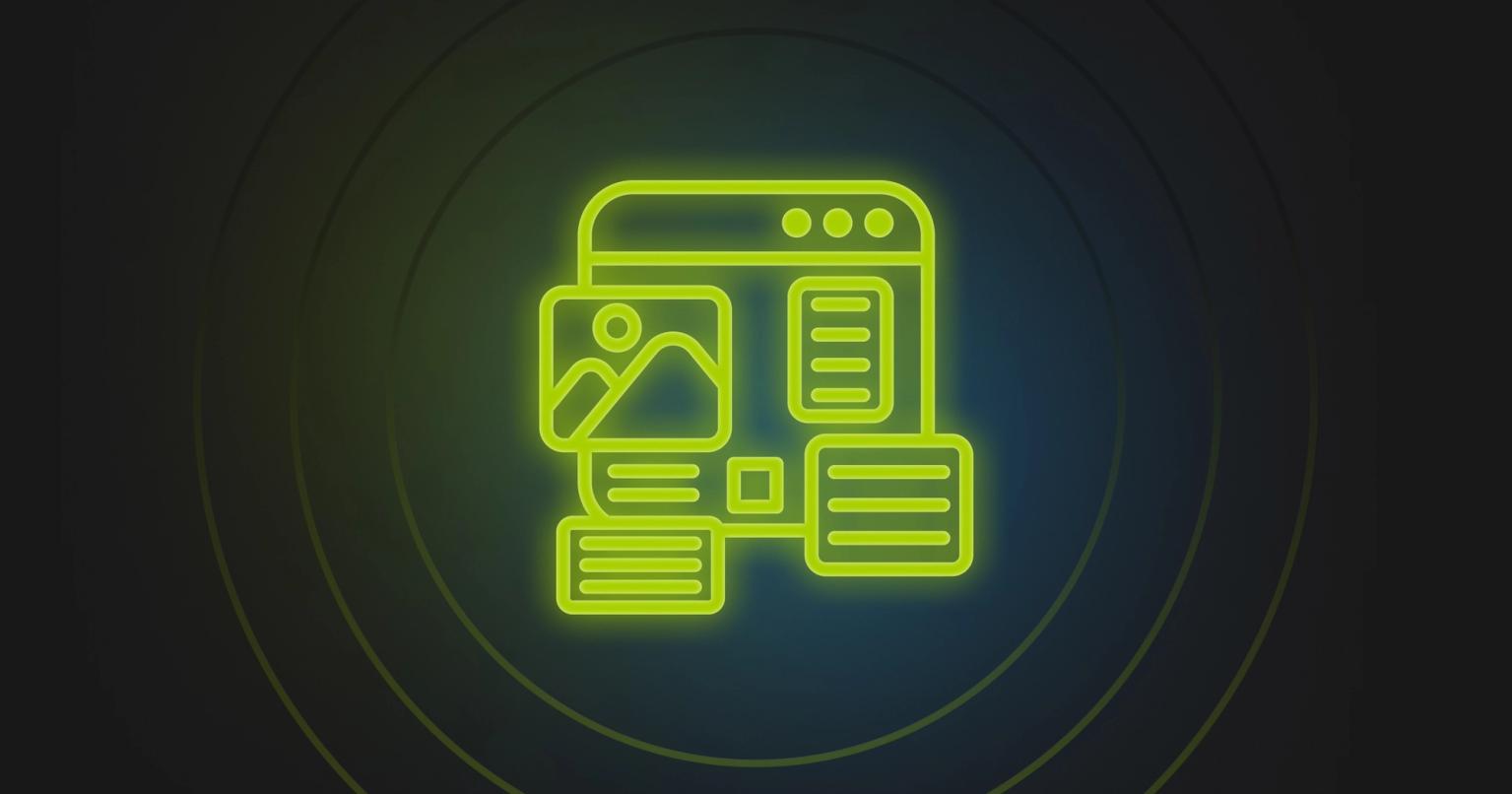Dynamic Content: The Key to Personalized Digital Experiences

Summary
Discover how dynamic content transforms digital marketing with personalized, high-impact user experiences.
Introduction
In a digital world saturated with content, personalization has become more than a luxury, it’s an expectation.
Dynamic content is a powerful way to meet this demand. Unlike static content, which remains the same for all recipients, dynamic content automatically adapts based on user data, behavior, and preferences.
Whether you're sending out promotional emails, reminders, or product news, dynamic content creates unique, personalized experiences for each user.
How Dynamic Content Works and Why it Matters
Today’s consumers expect brands to know them.
From the products they browse to the emails they open, users leave behind a digital footprint, and businesses that leverage this data to craft tailored experiences end up driving better results and building stronger relationships with their audience. Dynamic content is one of the most efficient and effective ways companies can take advantage of this; meeting users where they are, with messaging that feels relevant, timely, and personal.
The ability to get hyper-specific user data in real time enables the algorithm to determine the most relevant customization for dynamic content in an email. What was once a general email is now specific, personalized, and more likely to pique interest in receivers.
For example, a global SaaS company configured a product launch campaign with dynamic modules (in Knak!). Depending on the recipient’s job title and geographic region, the email automatically displayed different use cases, customer testimonials, and webinar invites.
A marketer in North America saw a local event invitation, while a CTO in Europe received content focused on backend scalability.
The result?
Increased click-through rates and significantly higher engagement across segments.
Types of Dynamic Content
Personalized Emails
Emails that use the recipient's name, highlight their purchase history, or recommend products based on previous behavior are among the most effective forms of dynamic content. If you're unsure how else to tailor your communications, you can check out our blog on 25 ways to personalize emails to snag some inspiration and tips on personalization.
Example |
|
|---|---|
Subject Line | "Taylor, we picked these just for you” |
Body | “Hi Taylor, Based on your recent purchase of the Luxe Linen Jumpsuit, we thought you’d love these new arrivals in our Summer Linen Collection. Get 15% off your next order—just for being a loyal customer!” |
Why it works | It uses name personalization, references a past purchase, and provides relevant recommendations with an incentive. |
Example | Subject Line |
|---|---|
| "Taylor, we picked these just for you” |
Example | Body |
|---|---|
| “Hi Taylor, Based on your recent purchase of the Luxe Linen Jumpsuit, we thought you’d love these new arrivals in our Summer Linen Collection. Get 15% off your next order—just for being a loyal customer!” |
Example | Why it works |
|---|---|
| It uses name personalization, references a past purchase, and provides relevant recommendations with an incentive. |
Targeted Ads and Pop-Ups
These dynamic elements adjust based on browsing history, geolocation, or device type. For example, a user in San Francisco might see a limited-time coupon for a local store, while someone browsing on mobile might get a click-to-call CTA.
Example |
|
|---|---|
Context | A user browsing from Toronto on a mobile device visits a travel website. They see a pop-up: |
Phrasing | "Last-minute getaway? Toronto to Cancun flights 20% off for mobile users. Book now—offer ends tonight!" |
Why it works | It dynamically adjusts based on geolocation (Toronto), device type (mobile), and urgency. |
Example | Context |
|---|---|
| A user browsing from Toronto on a mobile device visits a travel website. They see a pop-up: |
Example | Phrasing |
|---|---|
| "Last-minute getaway? Toronto to Cancun flights 20% off for mobile users. Book now—offer ends tonight!" |
Example | Why it works |
|---|---|
| It dynamically adjusts based on geolocation (Toronto), device type (mobile), and urgency. |
Customized Product Offers
E-commerce sites often display dynamic product suggestions or limited-time offers that reflect a user's past purchases or viewing behavior. Dynamic offers boost order size and keep users exploring.
Example |
|
|---|---|
Context | On Amazon, after browsing DSLR cameras, a user sees: |
Phrasing | "Complete your photography kit: 15% off camera bags and SD cards." Or:"Only 3 left in stock—Canon EOS R8, just for you!" |
Why it works | These offers reflect browsing and purchasing behavior to increase conversion and upsell related items. |
Example | Context |
|---|---|
| On Amazon, after browsing DSLR cameras, a user sees: |
Example | Phrasing |
|---|---|
| "Complete your photography kit: 15% off camera bags and SD cards." Or:"Only 3 left in stock—Canon EOS R8, just for you!" |
Example | Why it works |
|---|---|
| These offers reflect browsing and purchasing behavior to increase conversion and upsell related items. |
Dynamic Website Content
Elements like banners, product carousels, or navigation menus can be tailored to reflect user segments or past behaviors, making each visit feel unique.
Example |
|
|---|---|
Context | On a fitness website, repeat visitors who’ve viewed weight training content are greeted with: |
Phrasing | "Welcome back, Sam. New strength workouts tailored for your level are live!"(The homepage banner and navigation shift to highlight strength training content.) |
Why it works | The experience is customized to the user’s interest, increasing engagement and reducing friction. |
Example | Context |
|---|---|
| On a fitness website, repeat visitors who’ve viewed weight training content are greeted with: |
Example | Phrasing |
|---|---|
| "Welcome back, Sam. New strength workouts tailored for your level are live!"(The homepage banner and navigation shift to highlight strength training content.) |
Example | Why it works |
|---|---|
| The experience is customized to the user’s interest, increasing engagement and reducing friction. |
Interactive Content
Quizzes, calculators, and assessments are designed to respond to user input. A B2B company might use a diagnostic quiz that delivers a custom report outlining operational gaps and recommending their services.
Example |
|
|---|---|
Context | A SaaS company offers a quiz: |
Phrasing | "What’s Your Martech Stack Maturity Score?" Users answer a few questions and receive a custom report with a maturity score, gaps, and personalized tool recommendations—including the company’s product. |
Why it works | It offers value while qualifying leads and demonstrating how the product solves specific pain points. |
Example | Context |
|---|---|
| A SaaS company offers a quiz: |
Example | Phrasing |
|---|---|
| "What’s Your Martech Stack Maturity Score?" Users answer a few questions and receive a custom report with a maturity score, gaps, and personalized tool recommendations—including the company’s product. |
Example | Why it works |
|---|---|
| It offers value while qualifying leads and demonstrating how the product solves specific pain points. |
Interactive Videos
Some B2B brands use branching (aka choose-your-own-adventure) videos that give viewers control to choose paths and see different outcomes. These are great for training or product education.
Example |
|
|---|---|
Context | An HR software provider offers a branching demo video: |
Phrasing | "Choose your role to begin: HR Manager | Recruiter | Payroll Admin." Each path shows role-specific workflows and features, ending with tailored CTAs like “Schedule a demo for Payroll.” |
Why it works | Viewers get a self-directed, relevant experience, increasing retention and conversion. |
Example | Context |
|---|---|
| An HR software provider offers a branching demo video: |
Example | Phrasing |
|---|---|
| "Choose your role to begin: HR Manager | Recruiter | Payroll Admin." Each path shows role-specific workflows and features, ending with tailored CTAs like “Schedule a demo for Payroll.” |
Example | Why it works |
|---|---|
| Viewers get a self-directed, relevant experience, increasing retention and conversion. |
AI Chatbots
AI-driven chatbots can answer questions, guide users through product selection, and offer support as well as customizing the conversation based on the user’s behavior, past interactions, or account status.
Example |
|
|---|---|
Context | A returning user visits a telecom website. The chatbot says: |
Phrasing | "Welcome back, Mike! Looks like your last bill was paid on June 15. Need help managing your data plan?" If Mike asks about phones, the bot shows deals based on his upgrade eligibility. |
Why it works | It draws on past activity and account data for contextual, helpful support. |
Example | Context |
|---|---|
| A returning user visits a telecom website. The chatbot says: |
Example | Phrasing |
|---|---|
| "Welcome back, Mike! Looks like your last bill was paid on June 15. Need help managing your data plan?" If Mike asks about phones, the bot shows deals based on his upgrade eligibility. |
Example | Why it works |
|---|---|
| It draws on past activity and account data for contextual, helpful support. |
Customized Webinars and Events
Tailoring event invitations based on a user’s role, industry, or past engagement ensures higher relevance and better attendance. Follow-up content can also vary depending on the attendee’s session participation or interaction level.
Example |
|
|---|---|
Context | A fintech company sends invites: |
Phrasing | "Finance Leaders: Join our webinar on AI-Driven Forecasting for Enterprise CFOs." Attendees from a marketing role receive a different session:"How CMOs Are Using AI to Optimize Budget Allocation." Post-event follow-up includes a personalized deck based on sessions attended. |
Why it works | Tailored sessions and follow-ups increase relevance and drive deeper engagement. |
Example | Context |
|---|---|
| A fintech company sends invites: |
Example | Phrasing |
|---|---|
| "Finance Leaders: Join our webinar on AI-Driven Forecasting for Enterprise CFOs." Attendees from a marketing role receive a different session:"How CMOs Are Using AI to Optimize Budget Allocation." Post-event follow-up includes a personalized deck based on sessions attended. |
Example | Why it works |
|---|---|
| Tailored sessions and follow-ups increase relevance and drive deeper engagement. |
Location-Based Content
Websites can dynamically adjust promotions, event details, or landing page content based on a visitor’s location. This is especially useful for companies with regional events or offers.
Example |
|
|---|---|
Context | A coffee chain’s website detects a visitor from different locations: |
Phrasing | User from Seattle sees: "Stay cozy! Free upgrade to large lattes this week at Pike Street Café." Meanwhile, a user from Miami sees:"Cool off with our Iced Coconut Cold Brew—just $2.99!" |
Why it works | Offers are tailored to the weather and location, making them feel local and timely. |
Example | Context |
|---|---|
| A coffee chain’s website detects a visitor from different locations: |
Example | Phrasing |
|---|---|
| User from Seattle sees: "Stay cozy! Free upgrade to large lattes this week at Pike Street Café." Meanwhile, a user from Miami sees:"Cool off with our Iced Coconut Cold Brew—just $2.99!" |
Example | Why it works |
|---|---|
| Offers are tailored to the weather and location, making them feel local and timely. |
Benefits of Using Dynamic Content
Dynamic content offers a range of benefits that enhance the overall effectiveness of digital marketing strategies. One of the most significant advantages is the enhanced user experience it provides.
By delivering assets that align closely with individual user interests, dynamic content keeps audiences more engaged and makes digital interactions feel smoother, more intuitive, and ultimately more satisfying.
Another massive benefit of using dynamic content is its impact on conversions and sales.
When users receive customized offers and materials that directly reflect their preferences or behavior, they are more likely to engage, click, and make purchases. Even better, these purchases often result in higher average order values. This level of personalization directly contributes to better business outcomes.
Dynamic content also plays a crucial role in improving customer retention. When users feel recognized and understood, they develop a stronger connection to the brand. This sense of personalization fosters loyalty and encourages repeat visits, as each interaction is thoughtfully tailored to their needs, making customers feel like VIPs.
Lastly, there are measurable SEO(Search Engine Optimization) advantages. Dynamic content often leads to improved user engagement, longer time spent on site, and reduced bounce rates, all of which are positive signals to search engines. These improved metrics can help boost your site’s search rankings, increasing visibility and organic traffic.
Best Practices for Implementing Dynamic Content
Start with what matters: relevance. Don’t personalize just because you can. Personalize because it’s helpful to your consumer.
Whether it’s offering personalized product recommendations or adjusting website elements based on behavior, the aim of using dynamic content is to create experiences that feel directly relevant to each user, but not to the degree that it seems disingenuous or creepy.
Be mindful of what data you are using to inform your dynamic elements, and make sure that the personalization is truly impactful and helpful in each scenario it’s being applied.
Remember: Just because you have the data, doesn’t always mean you should use the data.
On another note, monitoring performance metrics, conducting A/B tests, and analyzing user feedback are also crucial elements in ensuring your strategy evolves with user expectations and behaviours. This ongoing optimization helps maximize effectiveness and ensures that your dynamic content delivers lasting value.
Conclusion
Dynamic content is essential for meeting the expectations of today’s consumers and maintaining a competitive edge in the digital marketplace.
It enables businesses and teams of all sizes to deliver personalized experiences that resonate with their audiences and lead to stronger results.By tailoring content to individual preferences and behaviors, brands can foster deeper engagement, increase conversions, and build long-term loyalty.
The best way to get started is by analyzing your audience data and testing dynamic content strategies. Even small steps can lead to noticeable improvements in user experience and performance!












